If an NBA team’s salary continues to rise after it surpasses both the salary cap and the luxury tax line, it may reach or exceed one or both tax “aprons.” The level of the first tax apron is several million dollars above the threshold at which a team becomes a taxpayer, while the second tax apron is another $10MM+ beyond the first apron.
A team whose salary exceeds the first apron is prohibited from making certain moves during that league year, while a team whose salary goes beyond the second apron faces even more restrictions. The goal is to encourage competitive balance by limiting the ability of the teams with the NBA’s highest payrolls to further upgrade their rosters.
Although the tax apron isn’t a new addition to the NBA’s Collective Bargaining Agreement, the 2023 CBA represents the first time that the league’s cap system features multiple aprons. The 2023 CBA also introduced several new rules that apply to teams whose salaries are above one or both aprons.
Let’s dive in and break down the tax aprons in greater detail…
How are the tax aprons calculated?
The formula that determined the level of the first tax apron in 2024/25 was as follows:
- Formula: $172,345,814 x ($140,588,000 / $136,021,000)
- Result: $178,132,000
- Note: The result was rounded to the nearest thousand.
These may just look on the surface like a collection of random numbers, but there’s a method to the madness. $172,345,814 was the result of last season’s first apron calculation (it was rounded to the nearest thousand, $172,346,000, for functional purposes); $140,588,000 is this season’s salary cap; and $136,021,000 was last season’s cap.
In other words, the first apron is simply rising by the same rate as the salary cap. That will continue to be the case going forward.
Like the first apron, the second apron will increase at the same rate as the cap each season, meaning the formula for 2024/25 was as follows:
- Formula: $182,793,814 x ($140,588,000 / $136,021,000)
- Result: $188,931,000
- Note: The result was rounded to the nearest thousand.
In future seasons, the current-year salary cap amount will be substituted into these two formulas in place of $140,588,000 to determine that season’s first and second tax aprons.
What restrictions does a team face if its salary is above the first tax apron but below the second apron?
When implementing its new CBA in 2023, the NBA gradually phased in the restrictions facing teams operating above the tax aprons over the course of two seasons. That gave those teams an opportunity to adjust their rosters to account for the new apron-related rules.
As of the 2024/24 season, all of the new restrictions are in effect.
Here are the moves that a team whose salary is above the first tax apron – but below the second apron – is prohibited from making in 2024/25 and beyond:
- Acquiring a player via sign-and-trade.
- Using any portion of the bi-annual exception for any transaction.
- Using any portion of the non-taxpayer mid-level exception to acquire a player via trade or waiver claim.
- Using more than the taxpayer portion of the mid-level exception to sign a player.
- Signing a player who was waived during the current season if his pre-waiver salary for that season exceeded the amount of the non-taxpayer mid-level exception.
- Using one or more outgoing players in a trade for matching purposes to take back more than 100% of the outgoing salary.
- Using a traded player exception generated during the prior year (ie. between the end of the previous regular season and the end of the most recent regular season).
It’s worth clarifying a few points related to these restrictions.
A team operating above the first apron doesn’t have access to the bi-annual exception or non-taxpayer mid-level exception, both of which can be used to sign a player or to acquire a player via trade or waiver claim. First-apron teams can use the taxpayer mid-level exception, but it can only be used to sign a player, not to acquire one via trade or waiver claim.
A team restricted to the taxpayer form of the mid-level can’t exceed its limits in dollars or years. For instance, in 2024/25, the taxpayer mid-level exception can be used to sign a player to a deal with a starting salary of up to $5,168,000 for up to two years. That means a team using its mid-level exception to sign a player to a three-year contract worth $3MM annually would have to use the non-taxpayer MLE to do so, since the deal would only fit within the taxpayer MLE in terms of money, not years.
The fifth item in the list above is important to remember after the trade deadline when certain veterans negotiate contract buyouts. If the player’s salary exceeds the full value of the non-taxpayer mid-level exception ($12,822,000 in 2024/25), he would be ineligible to sign with a team operating above the first apron once he clears waivers and reaches free agency — even if he negotiates a buyout that reduces his salary to below that non-taxpayer MLE amount.
The sixth item in the list only applies in instances where salary-matching is necessary. For example, a team operating above the first tax apron could send out a player earning $10MM in exchange for a player earning $9.5MM and a second player on a one-year, minimum-salary contract — even though the club would technically be taking back more total salary than it’s sending out, the minimum-salary player can be acquired using the minimum salary exception, so the $10MM player is only being used to match the $9.5MM player’s incoming salary.
In regard to the seventh item, let’s say a team operating above the first apron currently has one traded player exception worth $5MM, then generates another one worth $8MM at the 2025 trade deadline. Both of those exceptions would become unavailable once the team’s 2025 offseason begins.
That club could subsequently make a draft-night deal that generates a new $7MM trade exception and use it at any point between its creation and the end of the 2025/26 regular season. But if that team continues operating above the first apron, that $7MM TPE would once again become unavailable once the 2026 offseason begins, prior to its typical one-year expiration date.
What restrictions does a team face if its salary is above the second tax apron?
A team whose salary is above the second tax apron is prohibited from making any of the moves unavailable to teams above the first apron, as described above. That includes acquiring a player via sign-and-trade, using any portion of the bi-annual exception, and so on.
Additional restrictions also apply to teams operating above the second apron. Here are the moves that teams above the second tax apron are prohibited from making in 2024/25 and beyond:
- Using any portion of the mid-level exception.
- Aggregating two or more player salaries in a trade.
- Sending out cash as part of a trade.
- Acquiring a player via trade by using a signed-and-traded player for salary-matching purposes.
- Acquiring a player via trade using a traded player exception if that TPE was generated by sending out a player via sign-and-trade.
Teams above the second tax apron will face one more draft-related restriction beginning in the 2025 offseason. If the team’s salary exceeds the second apron at the end of a season, its first-round pick in the draft seven years away will be “frozen” — in other words, that pick would not be tradable.
If the team’s salary exceeds the second apron in at least two of the following four seasons (three of five in total), the frozen pick would move to the end of the first round for that draft. Conversely, if the team stays below the second apron for at least three of the subsequent four seasons, its pick becomes “unfrozen” and is once again tradable.
Let’s use the Suns as an example, since they’re a lock to finish the 2024/25 league year above the second tax apron. That would result in their 2032 first-round pick becoming frozen, ineligible to be traded once the ’25/26 league year begins. If their team salary remains above the second apron for at least two more seasons between ’25/26 and ’28/29, their frozen pick would move to the end of the 2032 first round and would remain ineligible to be dealt.
If multiple teams have a frozen pick moved to the end of the first round in a particular draft, they would make their selections in reverse order of their place in the NBA standings in the season prior to that draft. For example, if both the Suns and Celtics have their 2032 first-rounders moved to the end of the round and Boston finishes ahead of Phoenix in 2031/32, the Suns would pick ahead of the Celtics in that draft.
Can a team that begins a league year above the first or second tax apron gain the ability to make additional moves by reducing its salary and dipping below the apron(s)?
Yes. If a club were to open the 2025/26 league year carrying $200MM in salary, then engaged in a series of salary-dump trades that reduce its team salary to $150MM, it would no longer be subject to the restrictions facing an apron team.
The apron restrictions that apply to a team are determined by its salary position upon the conclusion of a given transaction. That means that if a second-apron club agrees to a trade that will move its team salary below the second apron, it could aggregate salaries and/or send out cash as part of that deal.
However, as long as the team’s salary remains above the first or second apron – or if the team is completing a transaction would push its salary above one apron or the other – that team is subject to the rules that apply to that apron level.
Critically, it’s worth noting that once a club engages in a roster move that is prohibited for a team above the first or second apron, that club will be hard-capped for the rest of the season at that apron level.
In 2024/25, for instance, teams like the Kings and Hornets acquired players via sign-and-trade, the Warriors and Mavericks used the non-taxpayer mid-level exception, and the Thunder and Pelicans took back more than 100% of their outgoing salary in trades. As a result, those teams are a few of the many that are hard-capped at the first apron ($178,132,000) and aren’t permitted to surpass that salary level for the rest of ’24/25.
The Nuggets, Pacers, and Knicks are the three teams currently hard-capped at the second apron ($188,931,000) this season. Denver used the taxpayer mid-level exception, Indiana sent out cash in a trade, and New York aggregated salaries in a trade.
Finally, there’s one more important point related to apron level restrictions and hard caps: A team that engages in any of the trade-related transactions prohibited for first or second apron teams between the end of the regular season and the end of that league year on June 30 will not be permitted to exceed that apron level during the following season.
If, for example, a team sends out cash in a trade in June of 2025, that team won’t be allowed to exceed the second tax apron during the 2025/26 league year. The inverse is also true — a team whose 2025/26 salary projects to be over the second apron won’t be able to trade cash in June 2025.
This rule only applies to trade-related transactions because the ones related to free agency don’t come into effect between the end of the regular season and the start of the next league year.
Anything else I should know about the tax aprons?
It’s worth pointing out that a club with a number of incentive bonuses on its books may find itself operating above the first or second apron even if its base team salary doesn’t exceed those levels.
For the purposes of calculating a team’s salary, a player’s likely incentives are included in his cap hit, but his unlikely incentives aren’t (an incentive is considered likely to be earned if it was achieved last season and unlikely to be earned if it wasn’t). However, for the purposes of determining a team’s apron level, all those incentives are counted.
That means a team with a $175MM base salary and an additional $5MM in unlikely incentives in 2024/25 would be considered a first apron team and would be unable to make certain roster moves, since there’s a chance those incentives could be earned, pushing the club’s salary above $178,132,000.
Note: This is a Hoops Rumors Glossary entry. Our glossary posts will explain specific rules relating to trades, free agency, or other aspects of the NBA’s Collective Bargaining Agreement.
An earlier version of this post was published in 2023.
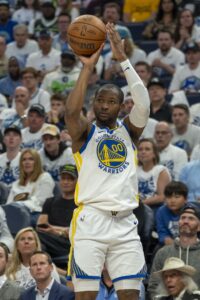 Let’s say the Warriors want to sign-and-trade
Let’s say the Warriors want to sign-and-trade 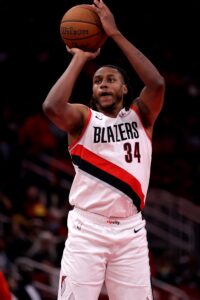 For instance, after earning $2,019,699 this season, Trail Blazers forward
For instance, after earning $2,019,699 this season, Trail Blazers forward 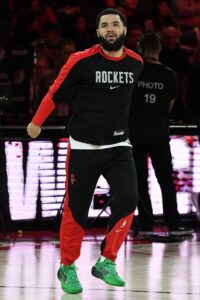 No cap hold can exceed the maximum salary for which a player can sign. For example, the cap hold for an Early Bird player with a salary above the league average is generally 130% of his previous salary, as noted above. But for an Early Bird player like Rockets guard
No cap hold can exceed the maximum salary for which a player can sign. For example, the cap hold for an Early Bird player with a salary above the league average is generally 130% of his previous salary, as noted above. But for an Early Bird player like Rockets guard 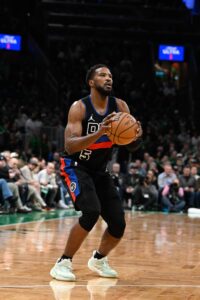 The salary limitations that apply to Non-Bird rights are more severe than those pertaining to Bird rights or Early Bird rights, so in many cases, the Non-Bird exception may not be enough to retain a well-regarded free agent. For instance, the Bucks held
The salary limitations that apply to Non-Bird rights are more severe than those pertaining to Bird rights or Early Bird rights, so in many cases, the Non-Bird exception may not be enough to retain a well-regarded free agent. For instance, the Bucks held 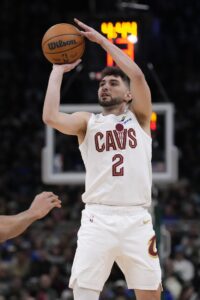
 For instance, the Hawks will hold
For instance, the Hawks will hold